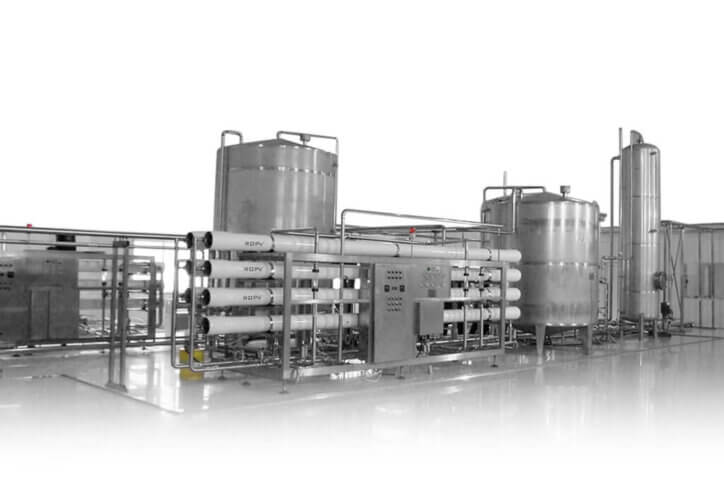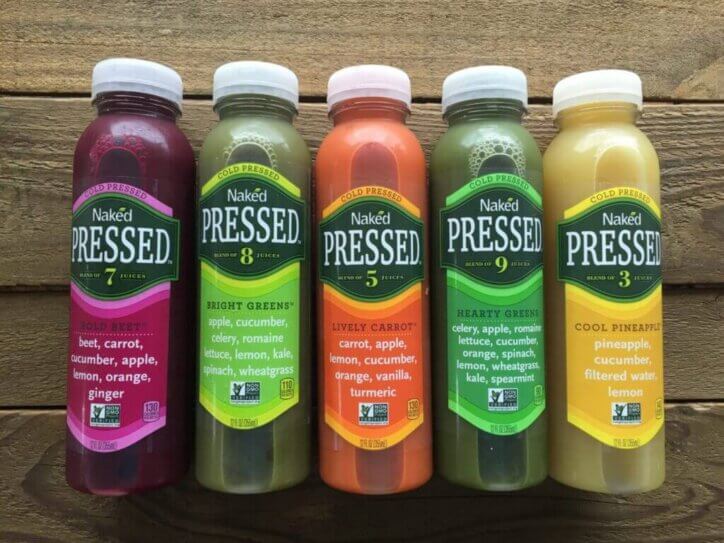Project Description
Tomato Ketchup Production Line
Description of Tomato Ketchup Production Line:
Tomato Ketchup is a nutritious and healthy cooking ingredient. It is rich in vitamin C, carotene, vitamin B, vitamin B2, calcium, phosphorus, potassium, magnesium, iron, zinc, copper, and iodine. It also contains protein and carbohydrates, Organic acids, cellulose. The lycopene in tomatoes has the effect of inhibiting bacteria. It contains vitamins and mineral elements and has a good protective effect on the cardiovascular system. It can reduce heart attacks, delay aging, regulate blood lipids, and enhance the body’s ability to resist radiation.
Tomato sauce/ketchup production line use tomato paste (28-30 Brix or 36-38 Brix) as main raw materials, then use pure water (RO water) to dilute tomato paste into 20-22brix or 12-14 Brix sauce or ketchup, to increase flavor and shelf life, salt, sugar, vinegar, starch, antiseptic(Sodium benzoate, potassium sorbate) need to be added. After that, we use one blending tank to mix all the ingredients, then through homogenizing, degassing and pasteurizing, we fill the tomato ketchup/sauce into small four sealed bags, tin cans, bottles, doypacks or brick cartons. To extend the shelf life of the tomato ketchup, The filling should be hot filling(85-89℃) as tomato ketchup is rich in nutrients, after hot filling, we use water bath pasteurizer or spray type pasteurizing cooling tunnel to do the secondary pasteurizing, and then cooling tomato ketchup from 80℃ to ambient temperature 30℃, then packing the containers into cartons or shrink package for consumption.
All ingredients are dosed by weighing or flow meter to ensure the accuracy of the proportion of each material.
The whole production line includes RO water generating system, hot water generating system, tomato paste transfer system, tomato sauce ingredients dissolving system, tomato ketchup preparation and mixing system, homogenizing, degassing and pasteurizing system, tomato ketchup filling machine, tomato ketchup in containers secondary pasteurizing machine and CIP system. It can be designed with continuous production or batch production according to the client’s budget and production capacity.
The tomato ketchup making machine is made of SUS304 food-grade material. After each production is completed, the CIP cleaning system will thoroughly clean the entire material pipeline and storage tank, filling machine, material pump, and sterilization machine to ensure that each batch of products is high-quality and hygienic.
The ketchup production process involves blending the concentrated tomato paste with water, vinegar, sugar, salt, and spices, heating the mixture to dissolve the solids and reduce it to a desired consistency, filtering out any remaining impurities, bottling or canning the ketchup, and finally, pasteurizing it to ensure safety and longevity on shelves as a popular condiment for various food dishes.
The capacity of the tomato ketchup making machine is from 500L/H-5000L/H available for clients to choose from.
The end products of tomato sauce or ketchup processing plant can be filled into bottles, tubes, tin cans, pouches, sachets or glass jars.
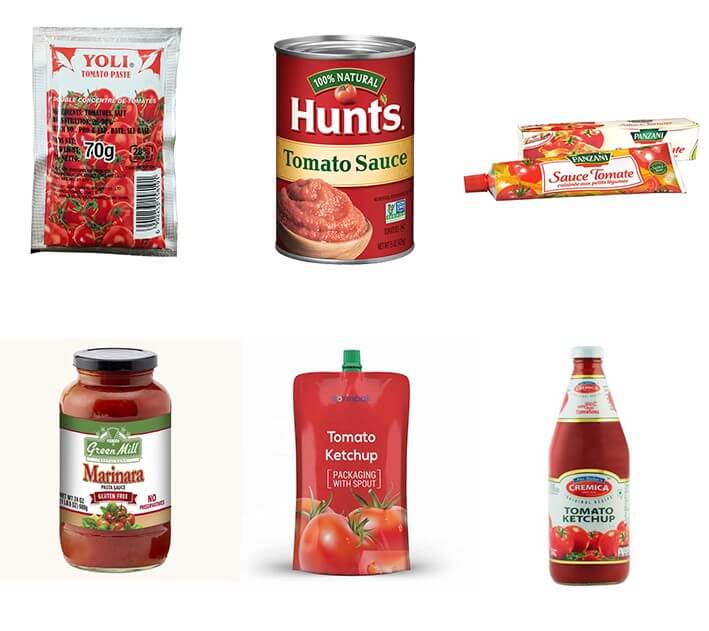
Ketchup Ingredients Formula For Reference
| Ingredients | Percentage |
|---|---|
| Sterilize RO Water | 38% |
| Concentrated Tomato Paste | 30% |
| Liquid Glouse | 13.5% |
| Sugar | 12% |
| Fine Salt | 3% |
| Vinegar | 2% |
| Starch | 1% |
| Flavours and Sweeteners | 0.3% |
| Sodium Erythorbate | 0.2% |
Technological Flowchart For Tomato ketchup Production Line:
There are two types of tomato sauce dilution line:
Continuous production tomato ketchup dilution line.
Raw materials are tomato paste, sugar and some other ingredients, then mix with all ingredients into blending tank, after homogenizing and degassing and pasteurizing, filling into small packages like small bottles or four sides sealed sachets.
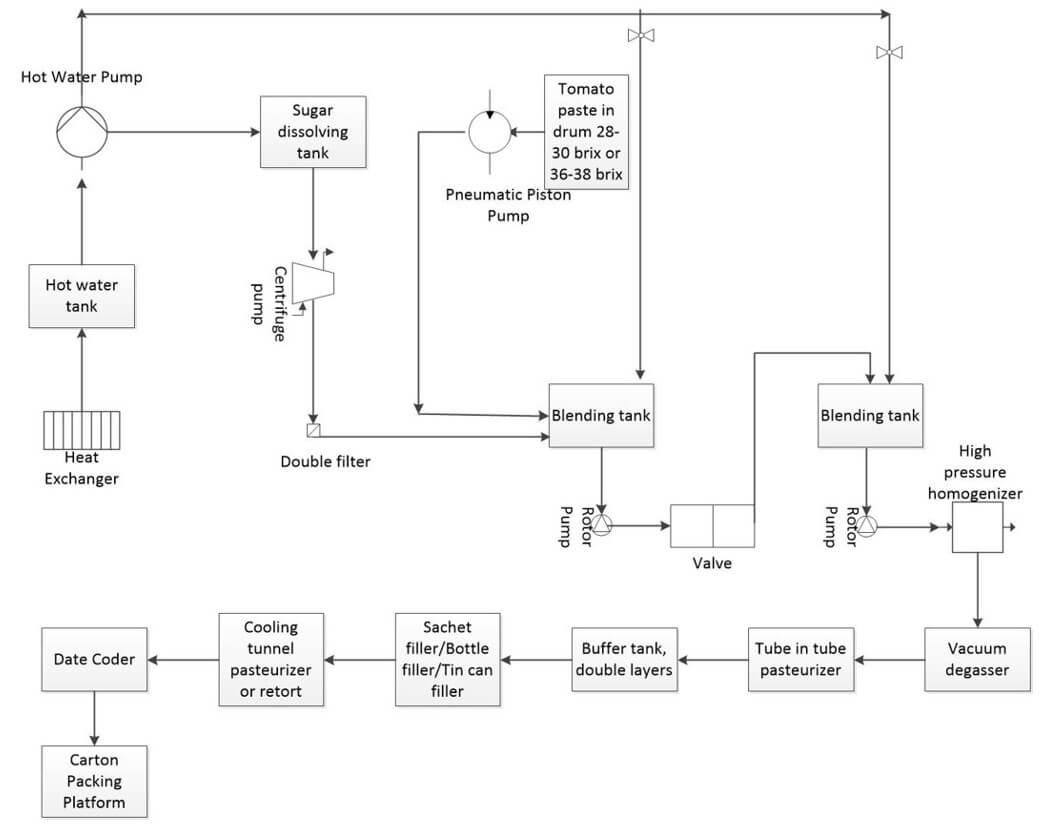
1Batch production tomato ketchup dilution line
This type is suitable for limited-budget clients who want to make a small capacity (Below 1TPH) tomato sauce production line. Usually, we mixed all ingredients into vacuum blending tanks. After mixed, we use this tank for pasteurizing. So this tank is integrated emulsifying, blending, pasteurizing, degassing and cooling into one body. After cooling, the tomato sauce/ketchup will be transferred into one buffer tank and then filled into small packages.
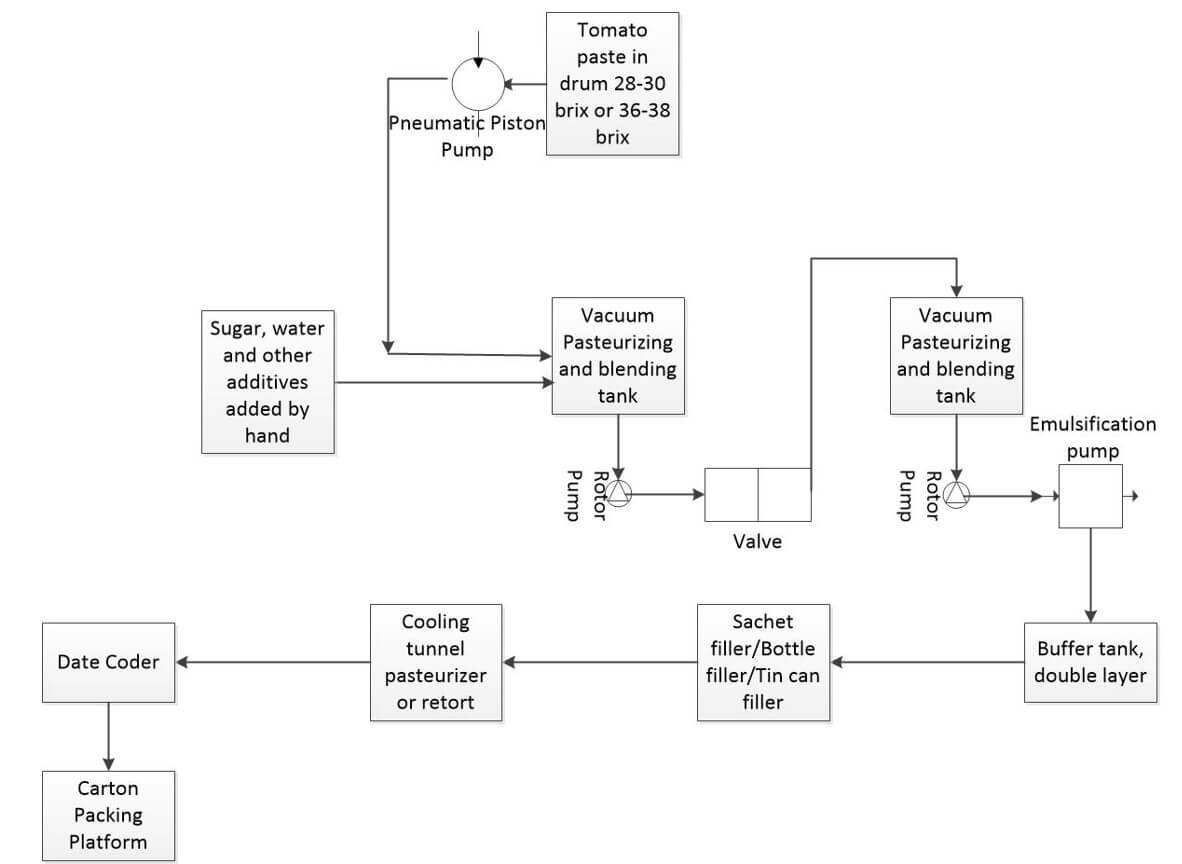
Key Machine of Tomato Sauce or ketchup Production Line
Tomato paste transfer system
This tomato paste transfer system is mainly used for transferring the concentrate tomato paste from the aseptic bag in drums to blending tanks. it consists of an electronic scale, one pneumatic piston pump, one electric hoist, pipelines.
Tomato ketchup ingredients dissolving system
This tomato ketchup ingredients dissolving system is used for dissolving all the powder ingredients, it mainly includes high shear dissolving tank, rotor pump and double filter. When working, the high shear dissolving tank feeds into hot water, after all the ingredients are weighed one by one according to the formula ratio, then fed into the tank manually, and then the high-speed agitator of the high-shear tank is turned on to dissolve the materials, after all ingredients are dissolved, then pump into the double filter to separate the solids, then feed into blending tanks.
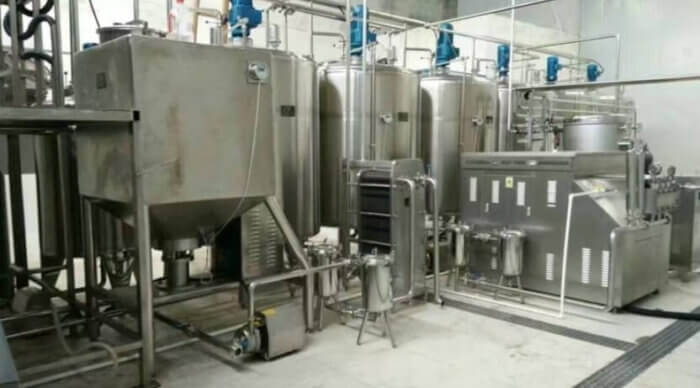
Tomato ketchup blending tank
The blending or preparation process is the core process in tomato ketchup processing, as after blending, we have obtained the semi-automatic tomato ketchup products. The blending process is also hot blending, which can improve production efficiency. The temperature is controlled at about 60-65℃, and the mixing time is controlled at about 15-30 minutes according to the ingredients.
The blending tank is made of triple layers of SUS304/316 material 2B plate with paddle type agitator, the stirring speed is 0-65rpm adjusted. It is ideal equipment for blending tomato paste, water, sugar and other ingredients into the mixed tomato sauce. This tank is equipped with material inlet and outlet, airtight manhole, PT 100 thermometer, Spirax Sarco steam valve group, level sensor, CIP cleaning ball, sanitary valve and so on. According to process requirements, the tank can be made into a three-layer vacuum mixing and pasteurizing tank for batch production, which can save clients investments a lot.
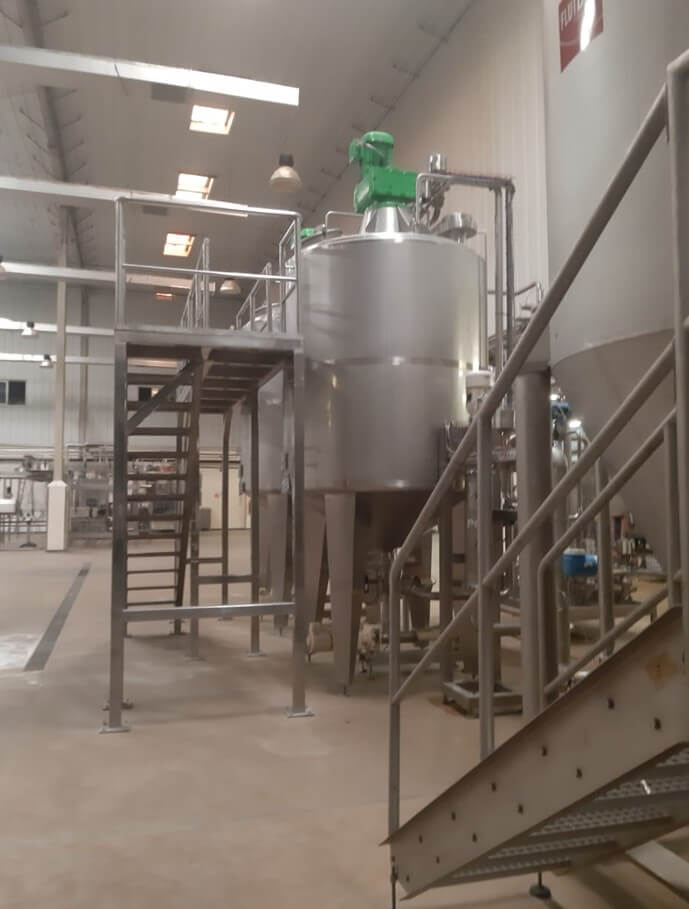
Tomato ketchup high-Pressure homogenizer
The high-pressure homogenizer is an ultra-fine crushing and emulsifying homogenizing equipment, under the triple action of shear, impact, and cavity, the tomato sauce is ultra-fine. Through homogenization, the tomato sauce is more smooth, the smaller particle size of the tomato suspension, and higher viscosity.
Due to the high viscosity and high acidity of tomato sauce, when using a homogenizer to process tomato sauce, the homogenizing head/valve is easy to wear. In order to effectively solve this problem, it is a good choice to use two-stage homogenization. The high-pressure homogenizer is mainly composed of a high-pressure pump and a homogeneous valve. The homogeneous pressure of the feed liquid is between 25-40mpa.
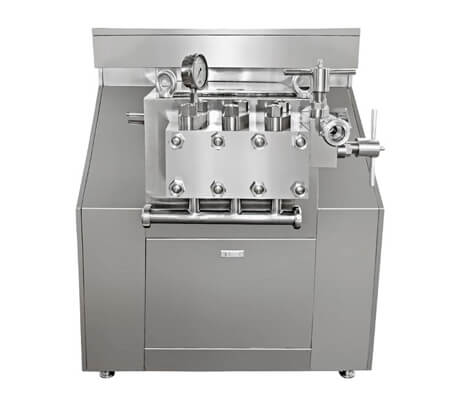
Tomato ketchup inline pasteurizer
The tomato sauce after blending and homogenizing, then it will be pumped into a sterilizer to kill pathogenic bacteria and extend shelf life. The sterilizing technological process is 55℃ homogenizing—98-105℃ for 120 seconds—85℃ material outlet for hot filling. As tomato sauce or ketchup is a high viscosity, we need to use a tube in tube pasteurizer or scraped surface heat exchanger to treat the material as for inline ketchup pasteurization. The two pasteurizers have heating and cooling functions by different heat-exchange mediums (hot water or cooling water). The capacity for the pasteurizers is from 200kg/h–100,000kg/h available for choose.
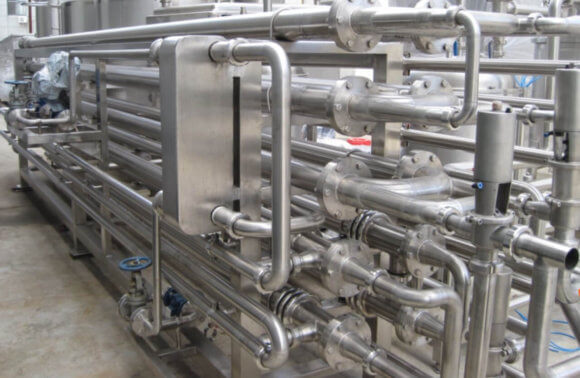
Tomato sauce or ketchup filling machine
The tomato sauce or ketchup after homogenizing, degassing and pasteurizing, should have solid, bright red color and a true tomato aroma. Then they can be filled into 10-100g four sides sealed sachets, 70g-2.5kg tin cans, 100ml-2500ml PET or glass bottles and stand-up pouches.
Tomato sauce or ketchup pasteurizing and cooling machine
There are two types of pasteurizing cooling machine for tomato ketchup or sauce secondary pasteurize. For tin can or bottle container tomato ketchup, we use the spray type pasteurizing cooling tunnel to spray hot water on the surface of the container to do pasteurization, then use cooling water to cool down to room temperature; For doypack pouches or sachets, we use the water bath type pasteurizing and cooling machine to treat. The pouches or sachets will be soaked into hot water to do pasteurize, then use cold water to cool down and at last use the compressor air to blow the water drops on the surface of the containers. The pasteurizing flowchart is using 95℃ hot water for pre-heating, then use warm water to pre-cool to 65℃, at last use cooling water to cool down to room temperature. The whole process takes about 40min-60min.
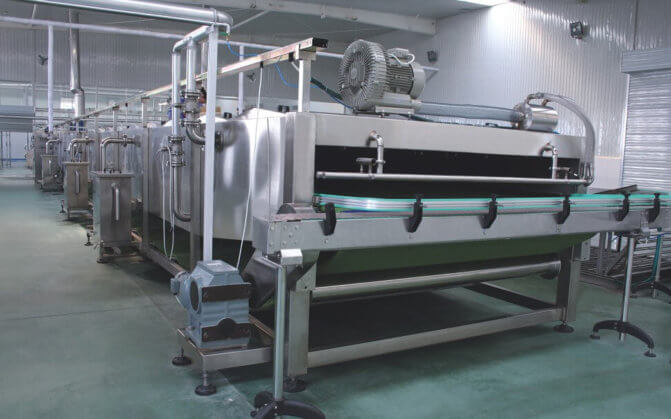
CIP cleaning plant
The ketchup processing plant need to equip the CIP cleaning system to clean the tanks, pipelines, pumps, valves and processing machines regularly to keep the processing line with high hygiene degree. Normally the processing machines need to clean every day after one shift is over, and the cleaning solution can be used for circulation, but as the concentration of the cleaning solution decreases, replace it once a week is suggested.
The clean capacity depends on how many clean points there are and also and ketchup processing capacity. The CIP cleaning system is composed of acid tank, alkali tank, hot water tank, cleaning water tank(optional), plate or tubular heat exchange system, CIP forwarding and return pump, pipelines, etc.
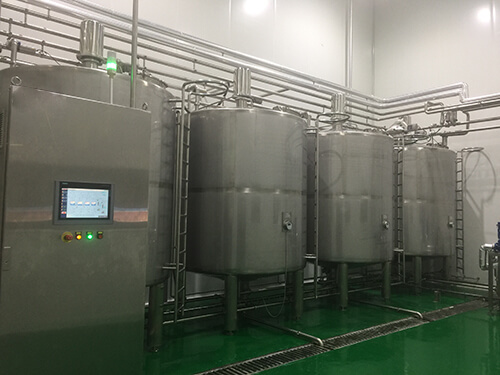
RO water treatment system for ketchup production plant
In ketchup production, the RO water generating system can be used to produce high-quality, purified water that can be used in various stages of the production process, such as dissolving ingredients, mixing, and CIP cleaning. The use of RO water can help to ensure the consistency and quality of the ketchup product, as well as reduce the risk of contamination and product spoilage.
The RO water treatment system capacity depends on the recipe and capacity of the ketchup production line. The system is mainly composed of the water storage tank, sand filter, carbon filter and RO equipment, and UV/ozone sterilizer.
